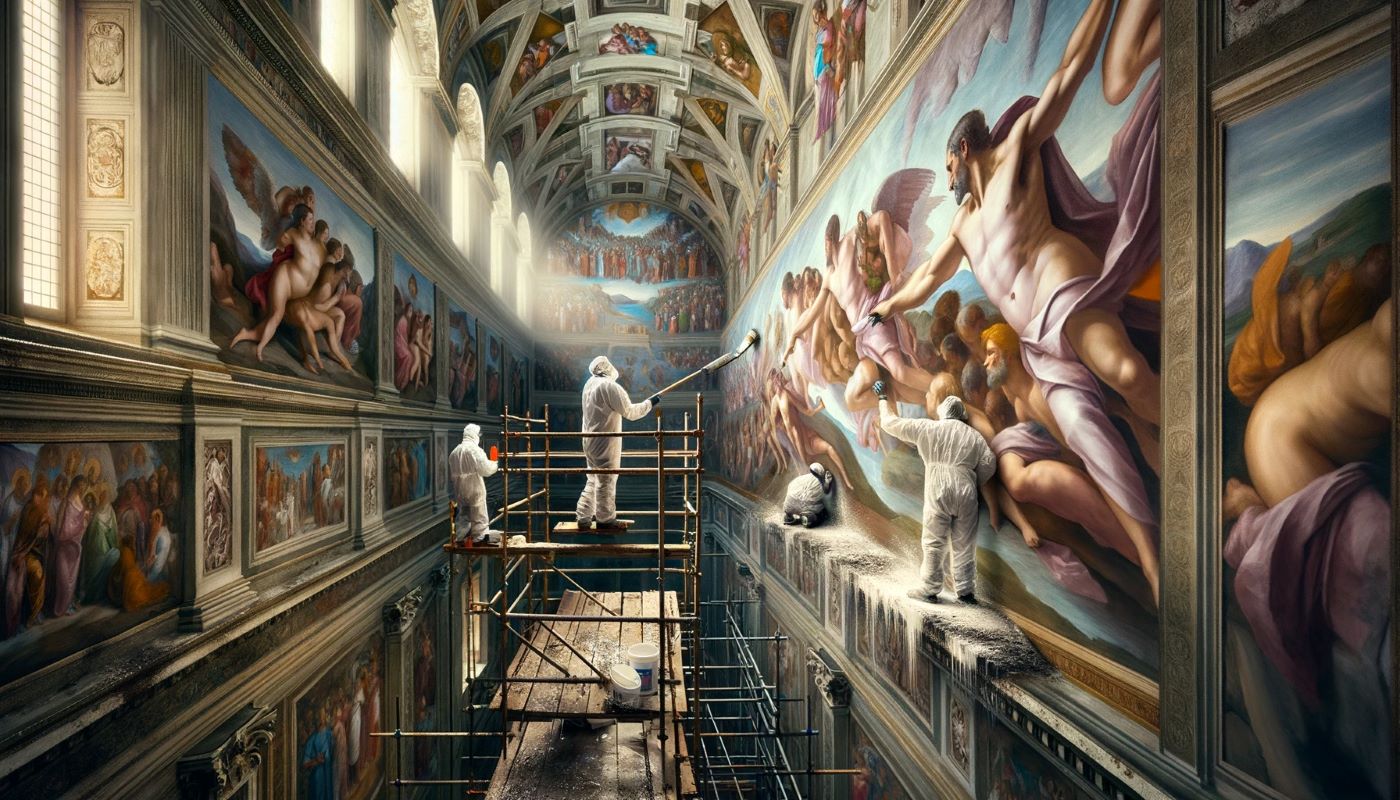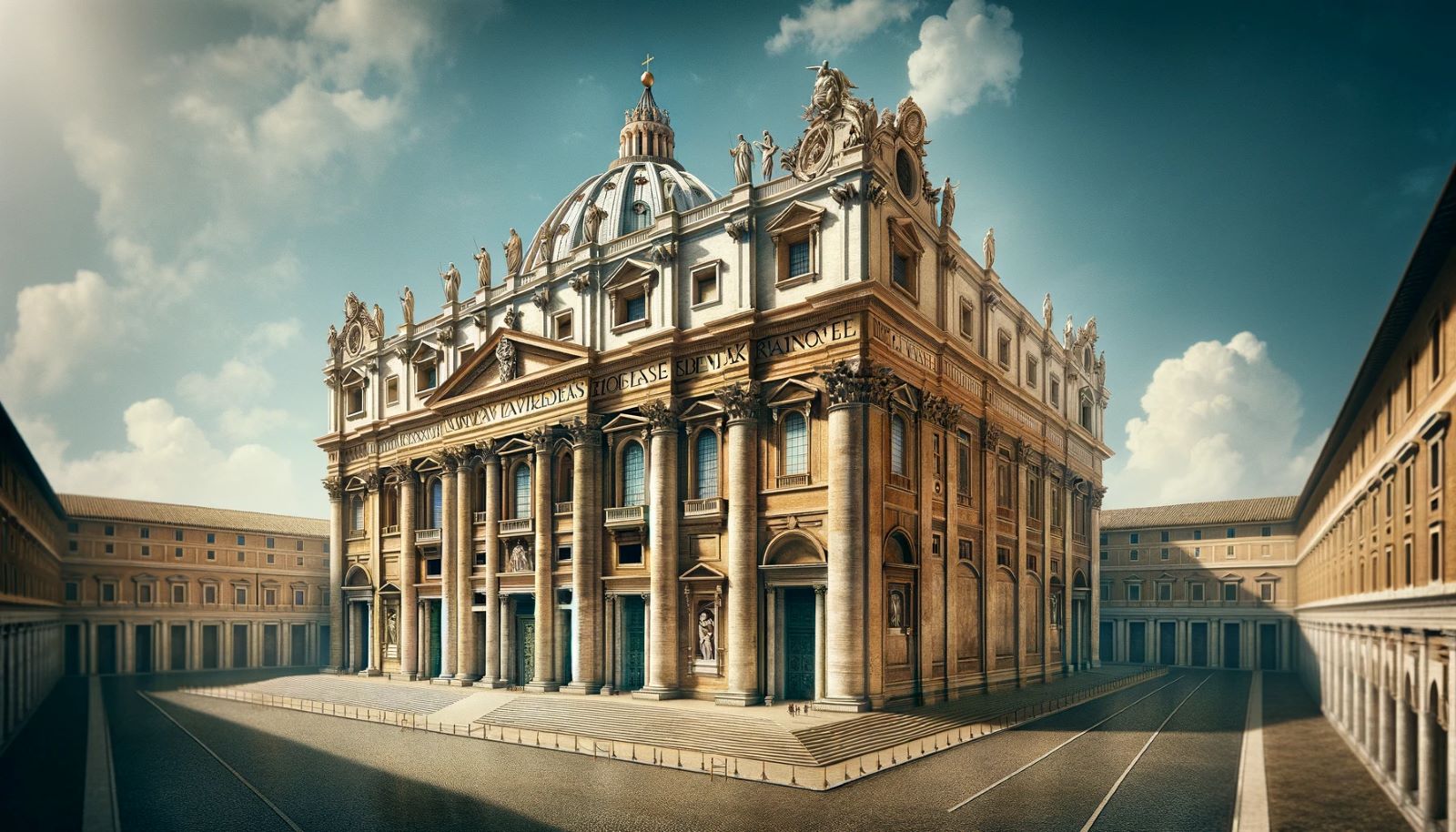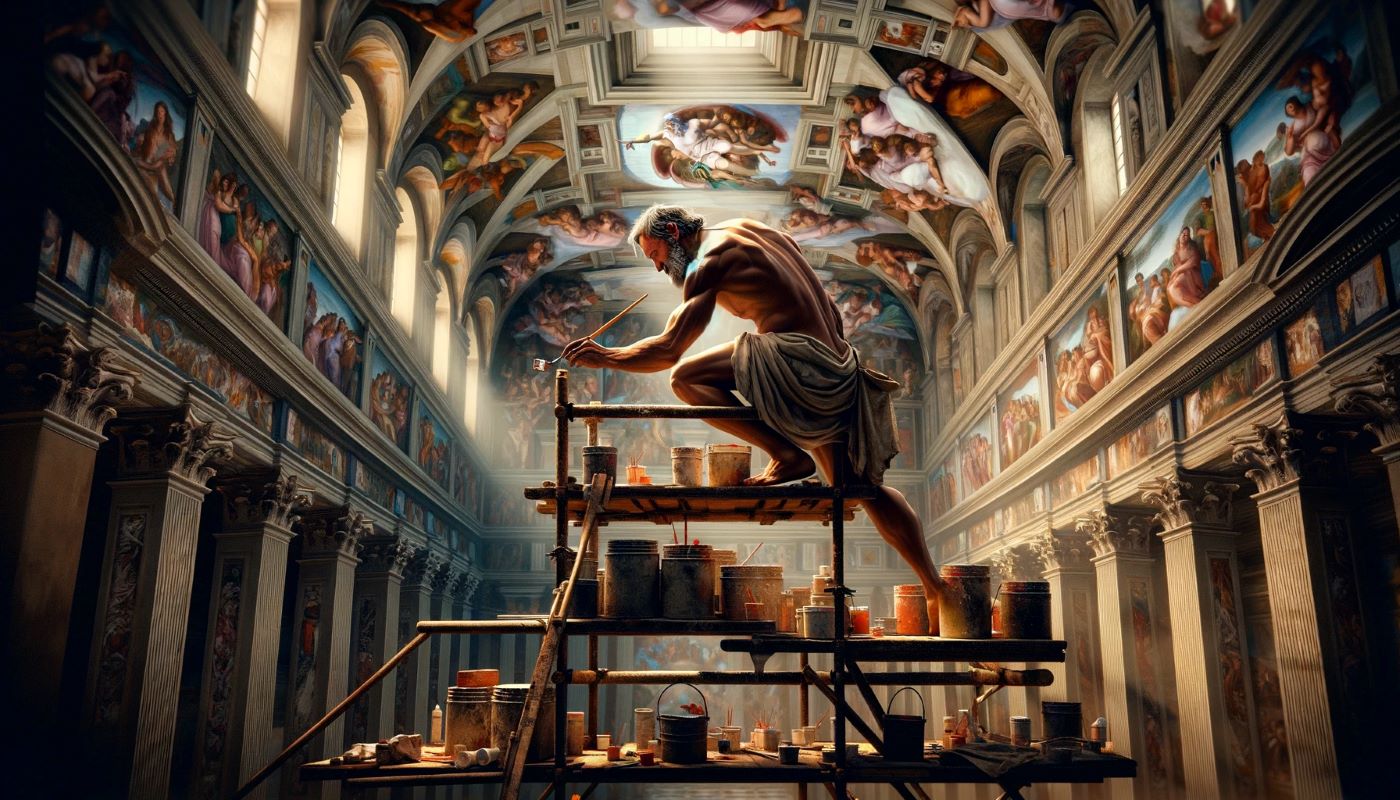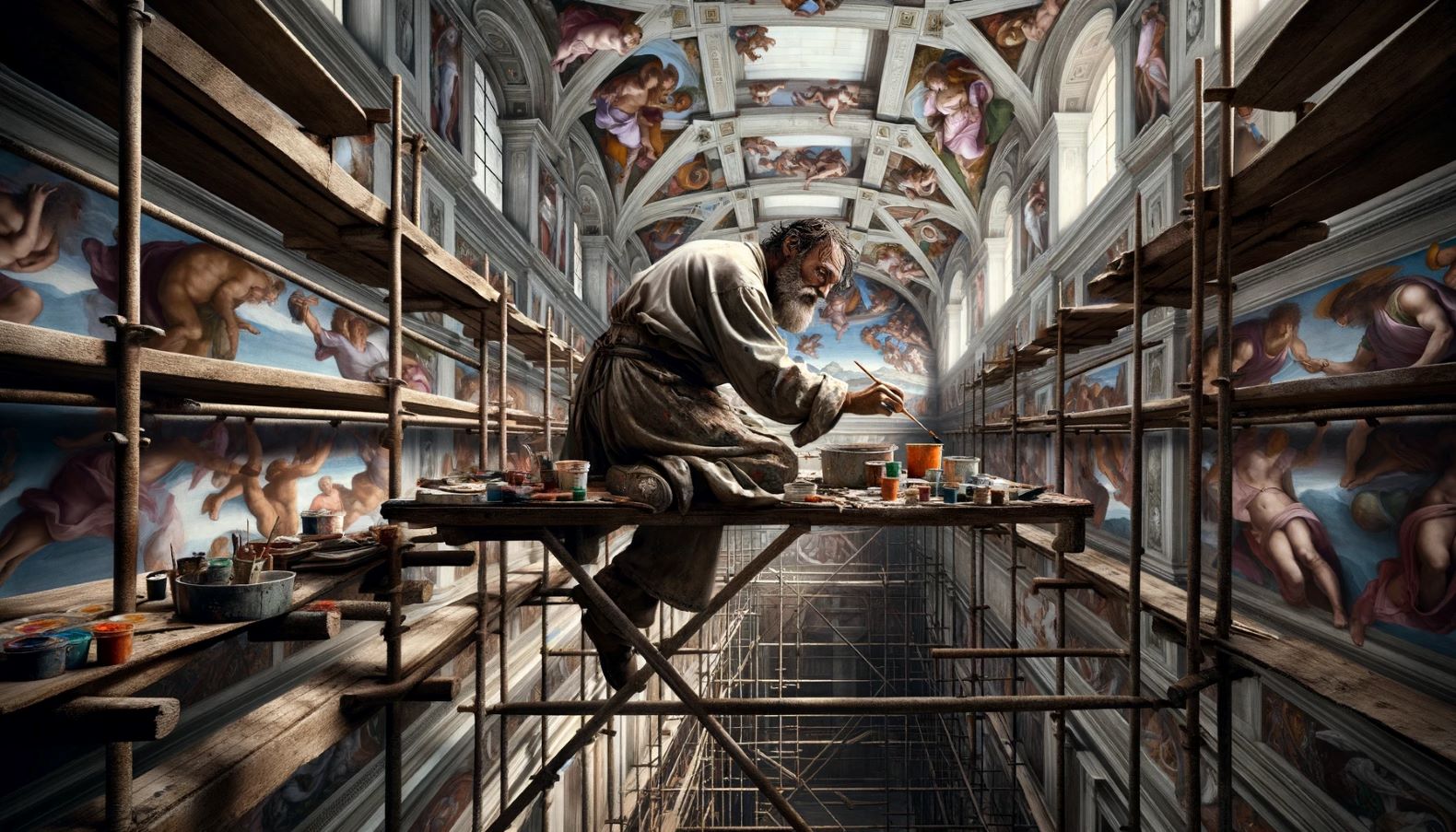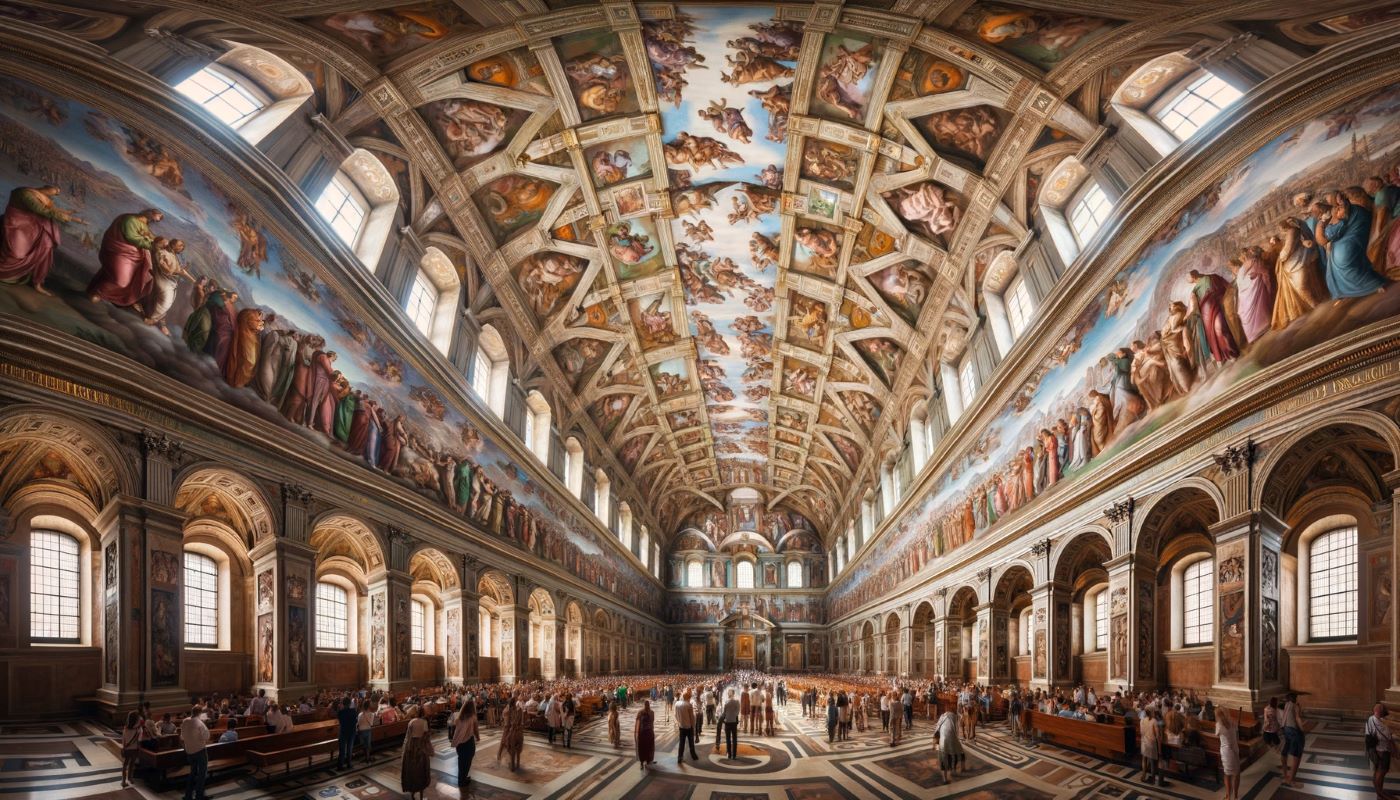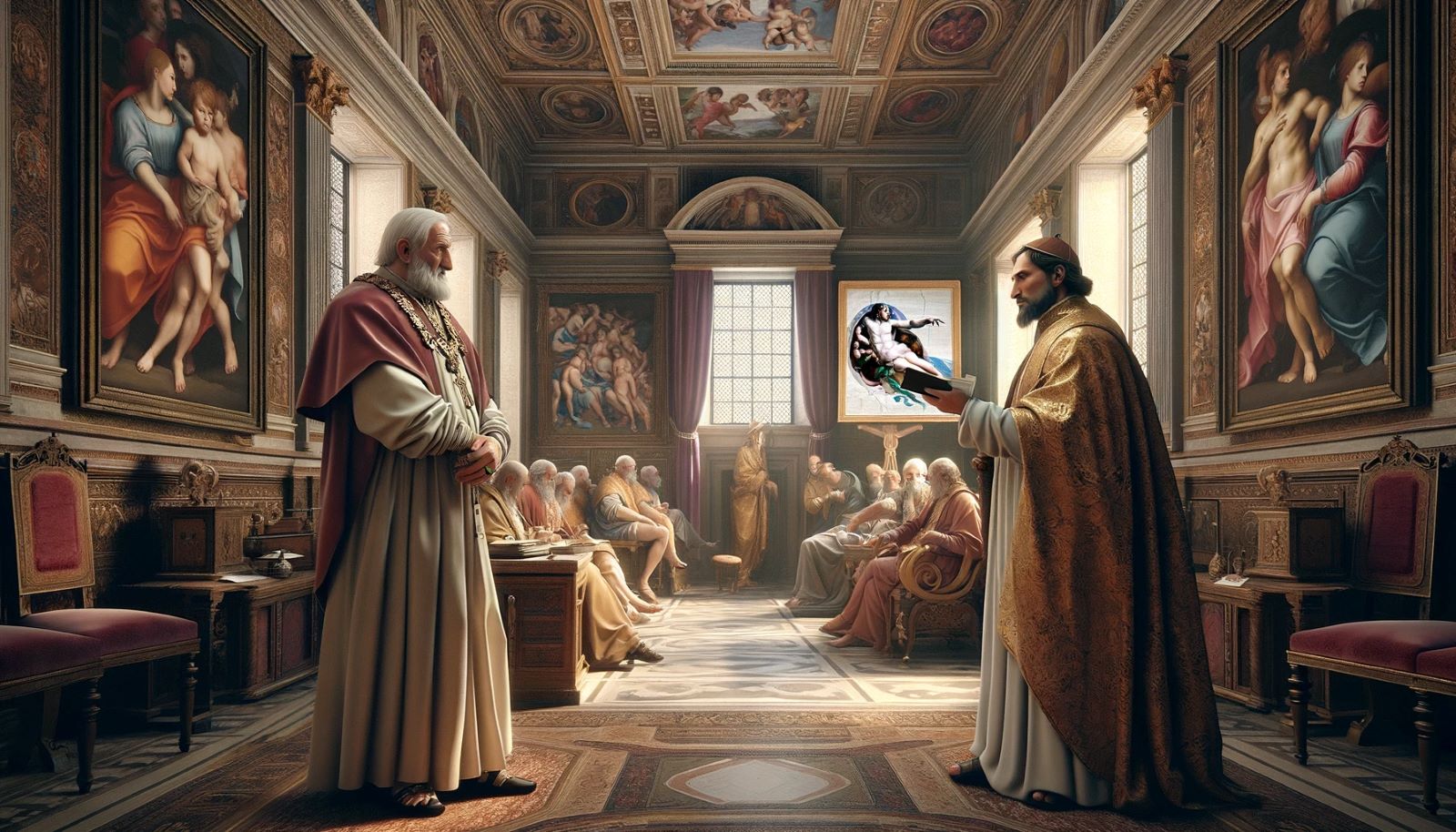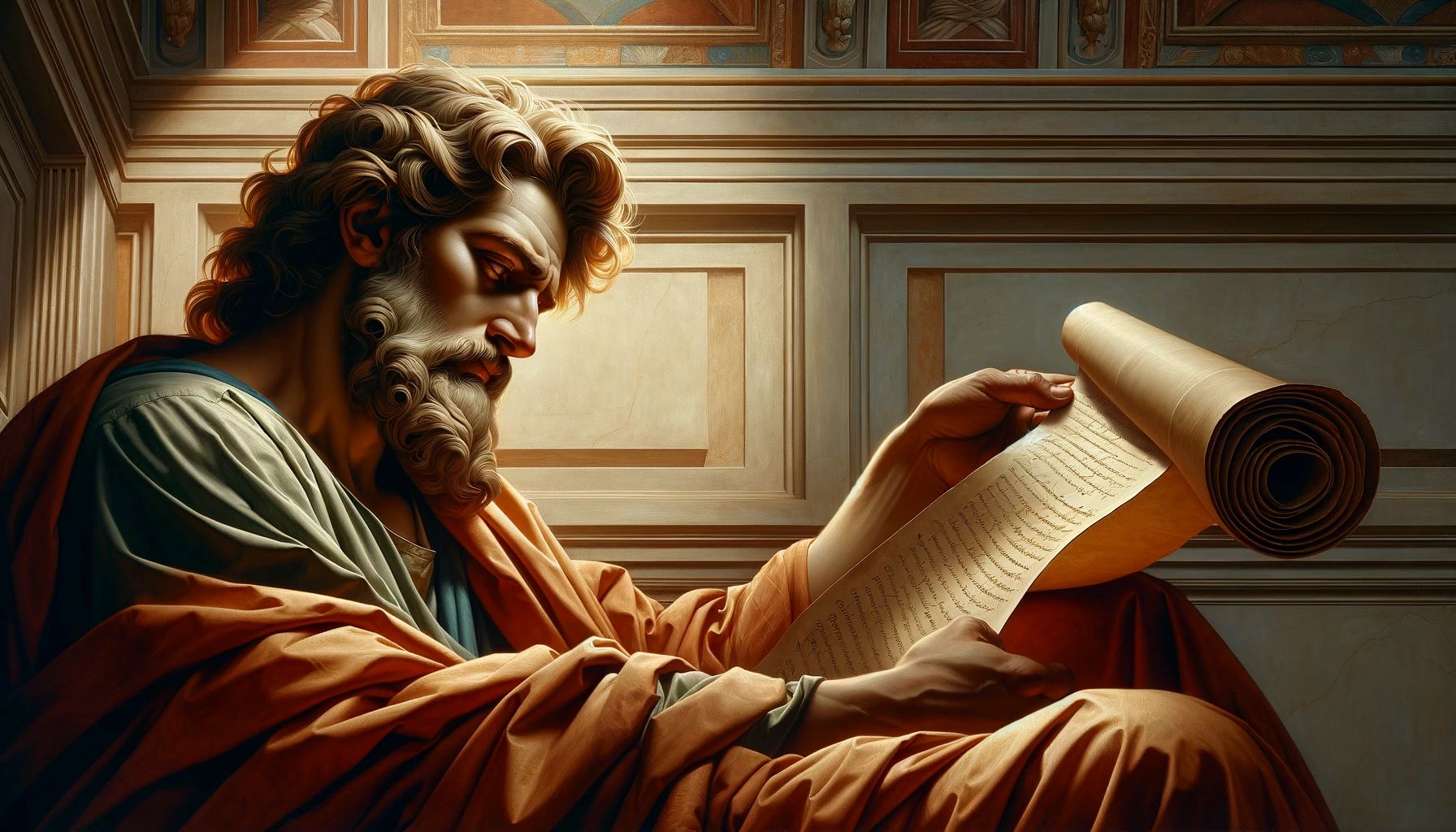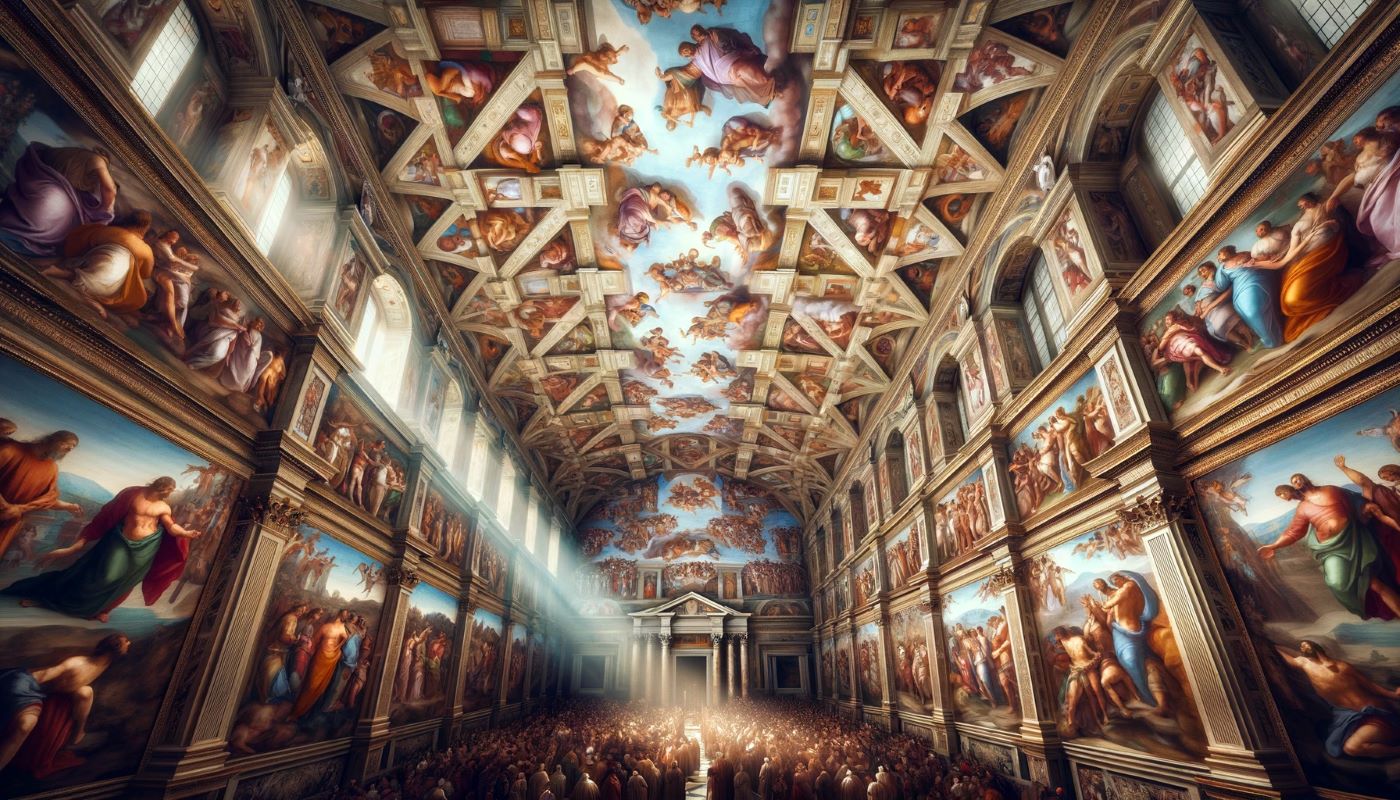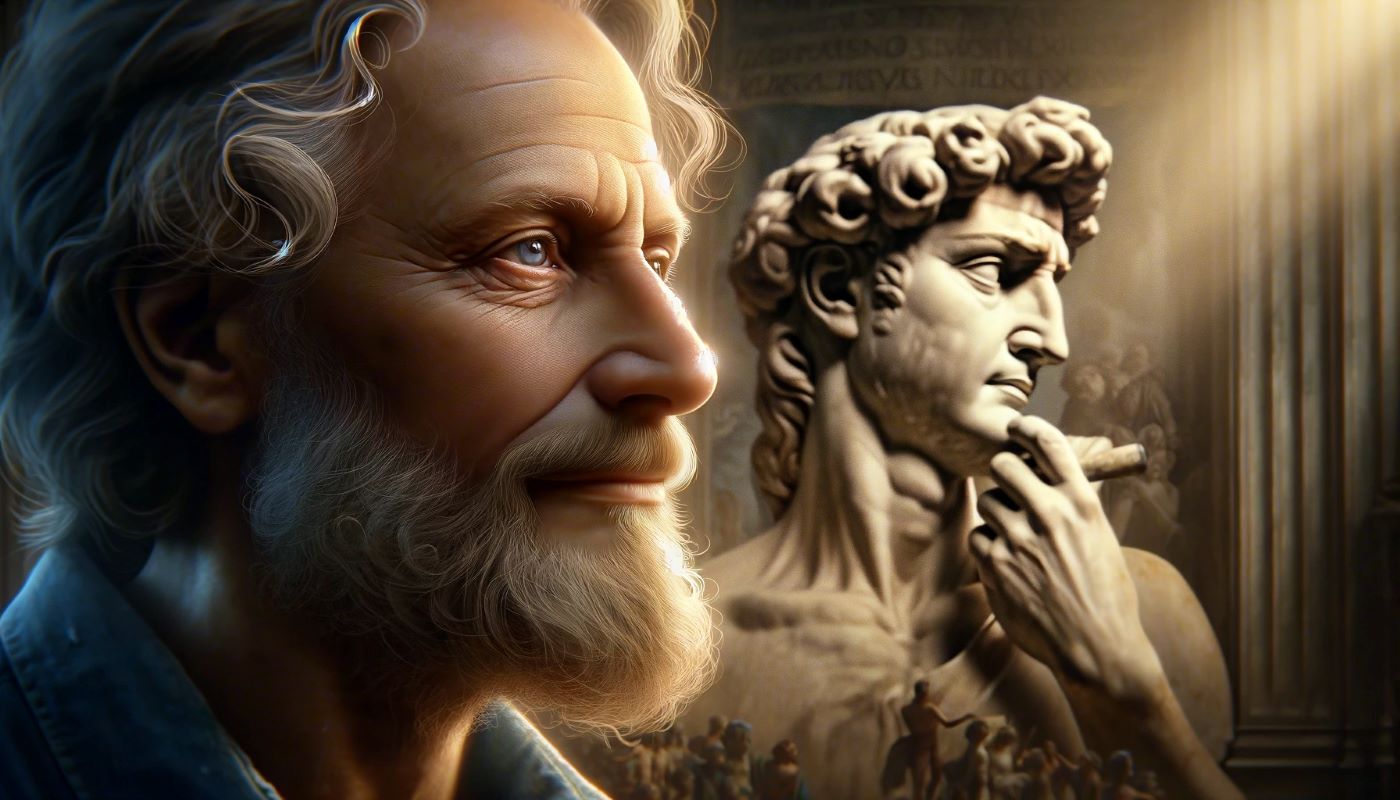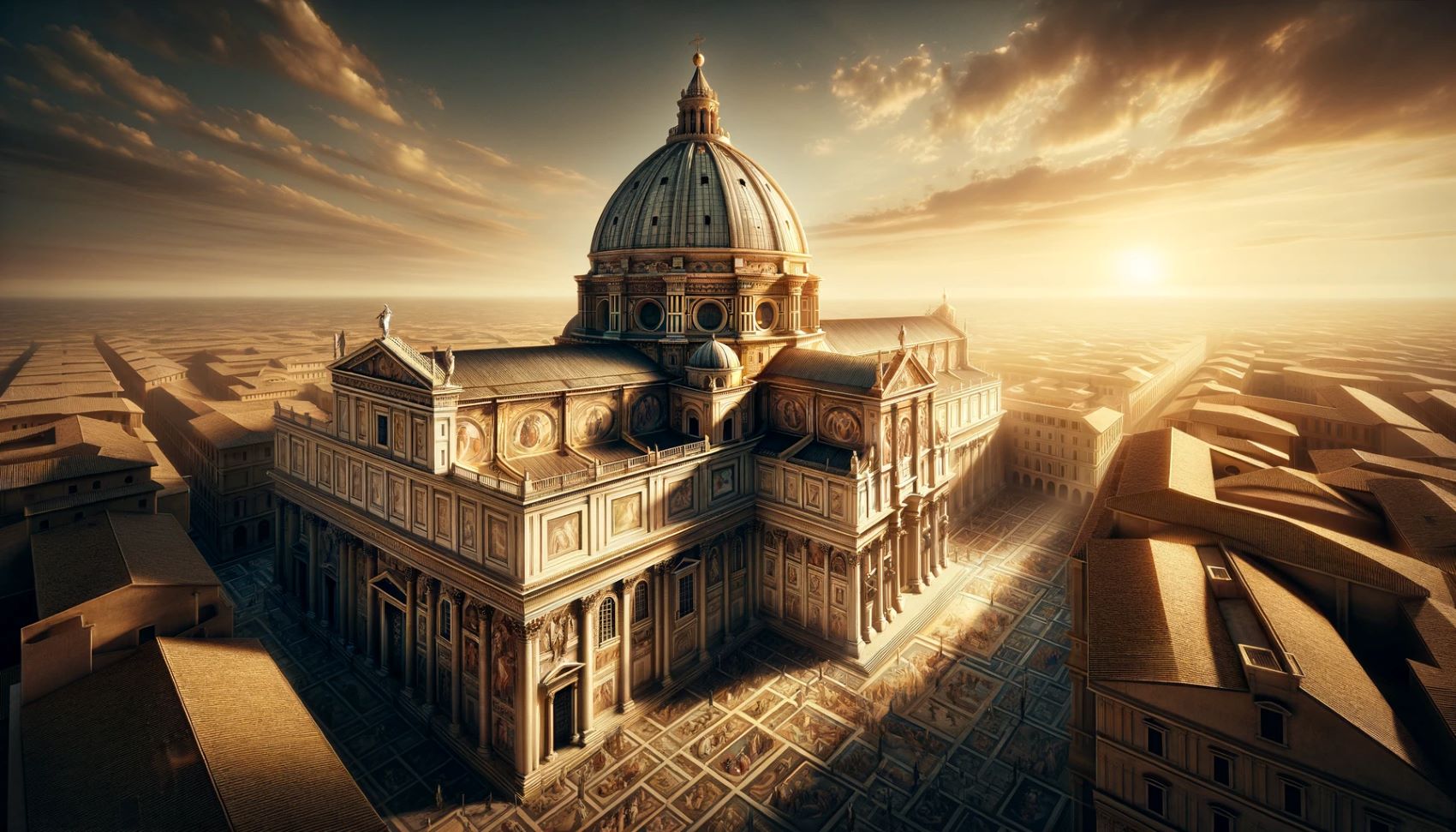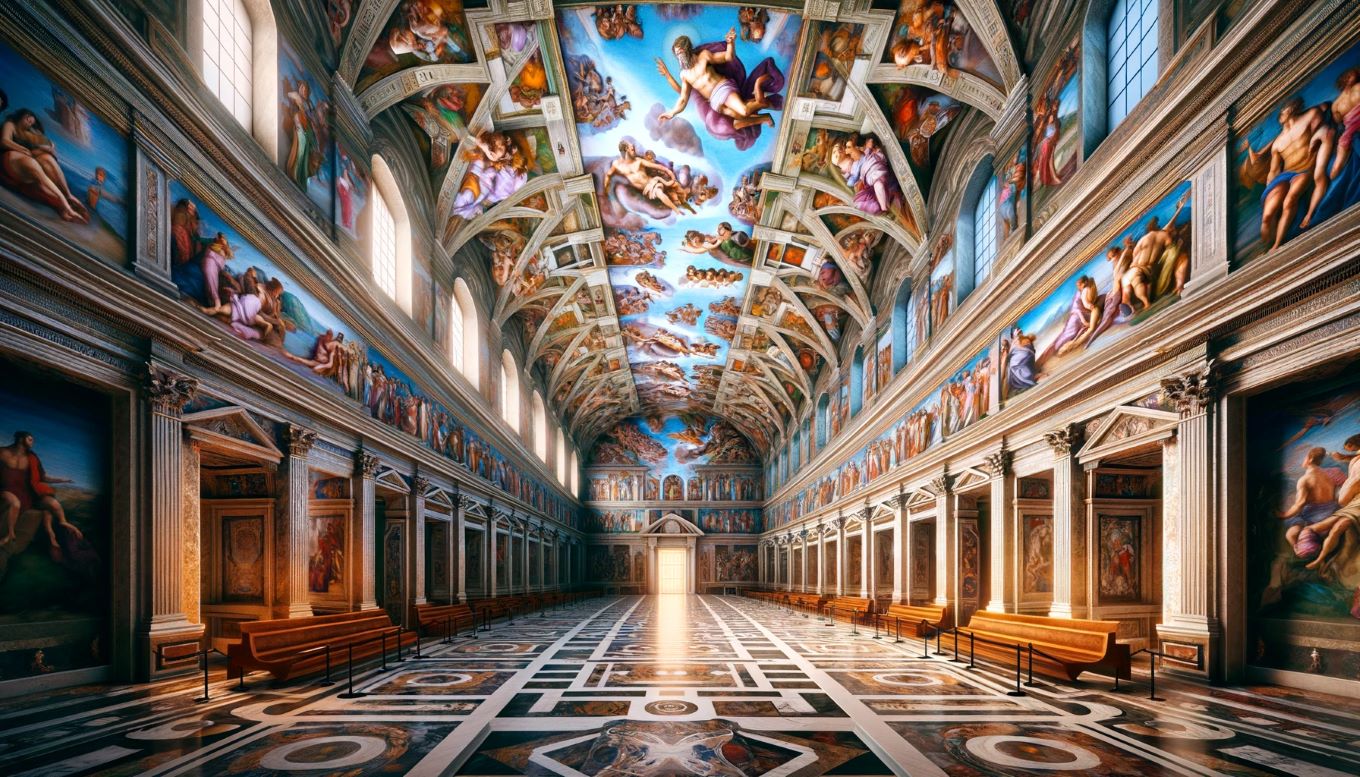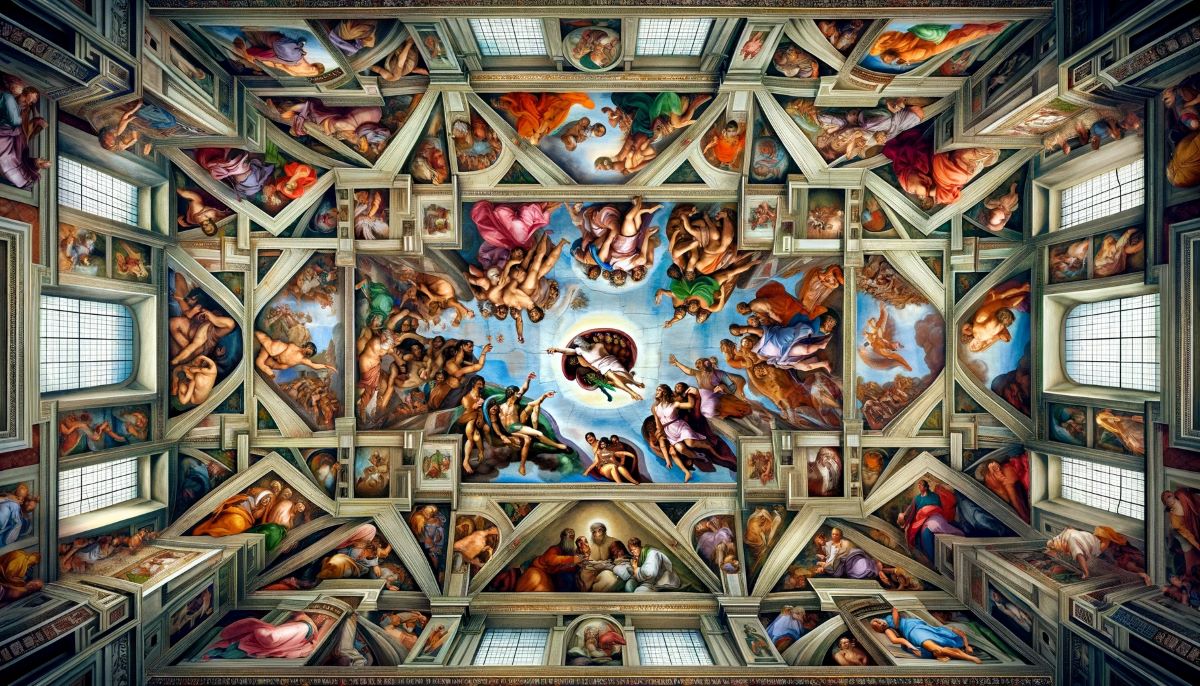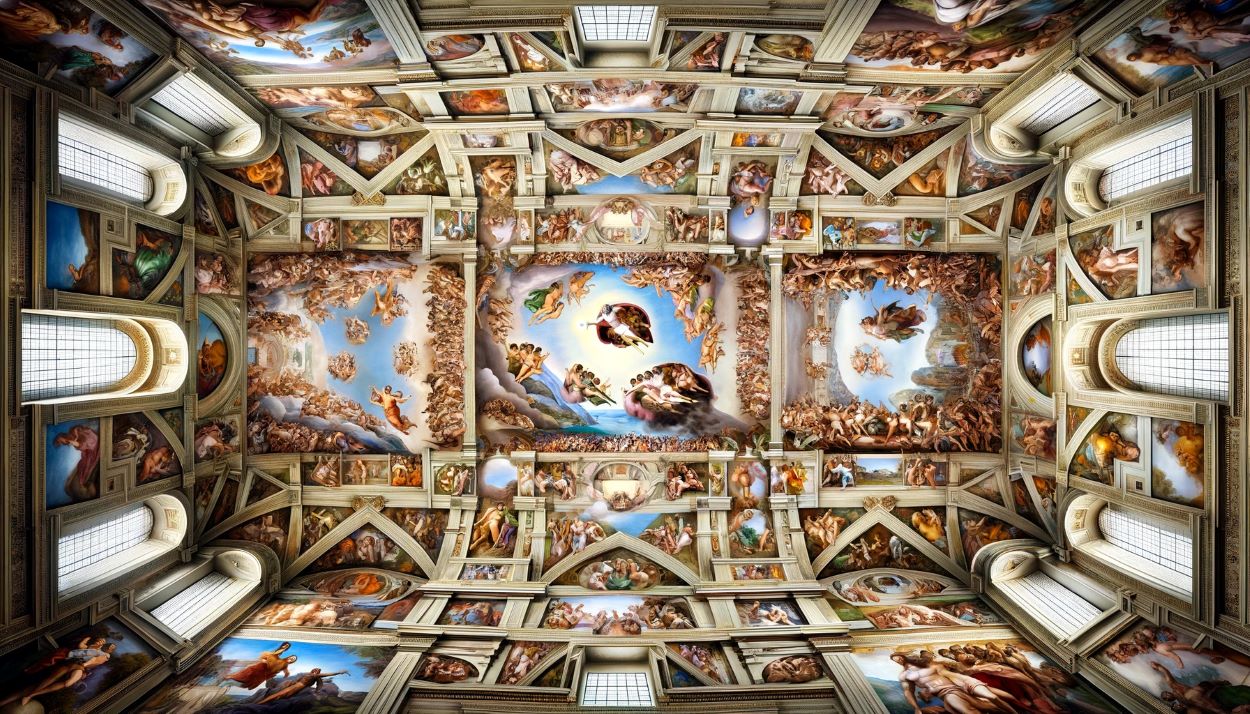Home>Arts and Culture>Who Is God Touching In The Sistine Chapel?


Arts and Culture
Who Is God Touching In The Sistine Chapel?
Published: March 4, 2024
Peter Smith, Editorial Director at Christian.net, combines deep insights into faith, politics, and culture to lead content creation that resonates widely. Awarded for his contributions to religious discourse, he previously headed a major organization for religious communicators, enhancing dialogue on faith's societal impacts.
Discover the iconic Sistine Chapel and unravel the mystery of who God is touching in this masterpiece. Explore the intersection of arts and culture in this timeless artwork.
(Many of the links in this article redirect to a specific reviewed product. Your purchase of these products through affiliate links helps to generate commission for Christian.net, at no extra cost. Learn more)
Table of Contents
The Creation of Adam
The Creation of Adam is one of the most iconic and well-known scenes depicted on the ceiling of the Sistine Chapel. Painted by the renowned artist Michelangelo, this masterpiece captures the moment when God breathes life into Adam, the first man according to the biblical narrative. The image portrays the outstretched arms of God reaching towards Adam, who is reclining on the earth, with their fingers almost touching. This powerful portrayal has sparked numerous interpretations and discussions about the significance of this divine gesture.
-
Divine Connection: The painting symbolizes the profound connection between God and humanity. The outstretched arms of God represent the act of bestowing life and consciousness upon Adam, emphasizing the divine origin of human existence. This depiction serves as a reminder of the spiritual bond between the Creator and His creation, highlighting the belief that humans are imbued with a spark of the divine.
-
The Gift of Life: Michelangelo's portrayal of God's gesture towards Adam conveys the concept of the "breath of life" as described in the Book of Genesis. The outstretched arm of God, infused with energy and vitality, imparts the essence of life to Adam, symbolizing the moment of his awakening and the beginning of human consciousness. This powerful imagery encapsulates the biblical narrative of God's role as the ultimate source of life and the giver of existence.
-
Human Potential: The painting also reflects the idea of human potential and the inherent capacity for spiritual connection. The nearly touching fingers of God and Adam illustrate the proximity between the divine and the human, suggesting the possibility of a direct and personal relationship with the Creator. This portrayal encourages contemplation on the significance of human agency and the pursuit of spiritual fulfillment through the acknowledgment of God's presence in everyday life.
-
Eternal Symbolism: The Creation of Adam serves as a timeless symbol of the enduring relationship between humanity and the divine. The image transcends its historical and religious context, resonating with people across different cultures and beliefs. The universal appeal of this masterpiece lies in its portrayal of the fundamental human longing for connection with the divine, encapsulating the timeless quest for spiritual meaning and transcendence.
In essence, the depiction of the Creation of Adam in the Sistine Chapel encapsulates the profound theological and existential themes of divine creation, human existence, and the eternal yearning for spiritual connection. Michelangelo's masterful rendition continues to inspire contemplation and awe, inviting viewers to ponder the enduring significance of this iconic portrayal of God's touch igniting the spark of humanity.
Read more: Who Was The Sistine Chapel For
The Creation of Eve
The Creation of Eve, another captivating masterpiece adorning the ceiling of the Sistine Chapel, depicts the pivotal moment when God forms Eve, the first woman, from the rib of Adam. Crafted by the artistic genius Michelangelo, this profound portrayal captures the divine act of Eve's creation, symbolizing the origins of womanhood and the sacred bond between Adam and Eve. The scene unfolds with God's commanding gesture, as Eve emerges from the side of Adam, evoking contemplation on the significance of this transformative event.
-
Divine Genesis: The painting encapsulates the biblical narrative of Eve's creation, illustrating the divine agency behind her existence. God's authoritative gesture and the emergence of Eve from Adam's side signify the divine intention and purpose in the formation of womanhood. This portrayal emphasizes the sacred nature of Eve's creation and her integral role in the human story, highlighting the divine wisdom and design inherent in the genesis of woman.
-
Sacred Union: The depiction of Eve's creation symbolizes the profound unity and interconnectedness between man and woman. As Eve emerges from Adam's side, the painting conveys the intrinsic bond and mutual dependence between the first man and woman. This imagery serves as a powerful representation of the divine origin of human relationships, emphasizing the complementary nature of male and female, and the sacred union that defines the human experience.
-
Eternal Feminine: Michelangelo's portrayal of Eve's creation embodies the timeless archetype of femininity and the divine essence of womanhood. The image of Eve, newly formed and infused with life by the divine touch, symbolizes the eternal significance of women in the narrative of creation. This portrayal invites reflection on the sacred role of women as bearers of life, nurturers, and partners in the unfolding of human history, underscoring the enduring value and dignity of the feminine spirit.
-
Symbol of Creation: The Creation of Eve stands as a profound symbol of the divine act of creation and the emergence of woman as an essential part of the human story. The painting transcends its historical context, resonating as a universal representation of the sacred origins of womanhood and the timeless significance of the feminine in the grand tapestry of existence. This portrayal invites contemplation on the divine purpose and meaning inherent in the creation of Eve, inspiring reverence for the sacred role of women in the ongoing narrative of human life.
In essence, the depiction of the Creation of Eve in the Sistine Chapel encapsulates the profound themes of divine creation, the sacred union of man and woman, and the eternal significance of femininity. Michelangelo's masterful rendition continues to inspire contemplation and reverence, inviting viewers to ponder the enduring symbolism and spiritual depth of this iconic portrayal of Eve's divine genesis.
The Separation of Light from Darkness
The iconic depiction of the Separation of Light from Darkness on the ceiling of the Sistine Chapel by Michelangelo captures the profound moment of divine creation as described in the Book of Genesis. This powerful portrayal showcases the dramatic contrast between light and darkness, symbolizing the act of God bringing forth light to dispel the primordial darkness. The imagery evokes contemplation on the spiritual significance of this transformative event and the enduring symbolism of light as a divine and illuminating force.
-
Primordial Genesis: The painting encapsulates the biblical narrative of the creation of light, signifying the emergence of order and vitality in the cosmos. God's commanding gesture, as depicted by Michelangelo, conveys the divine intention behind the separation of light from darkness, marking the beginning of creation. This portrayal emphasizes the foundational role of light in the genesis of the universe, symbolizing the divine act of bringing forth life and radiance from the formless void.
-
Symbol of Illumination: The Separation of Light from Darkness serves as a profound symbol of illumination and spiritual awakening. The stark juxtaposition of light and darkness conveys the transformative power of divine light, dispelling obscurity and heralding the dawn of creation. This imagery invites contemplation on the symbolic significance of light as a metaphor for spiritual enlightenment, truth, and the presence of the divine, inspiring reverence for the illuminating grace that permeates the human experience.
-
Metaphor for Hope: Michelangelo's masterful rendition of the separation of light from darkness embodies a timeless metaphor for hope and renewal. The portrayal of light piercing through the darkness evokes a sense of optimism and the promise of new beginnings, resonating with the human longing for guidance and transcendence. This imagery invites viewers to reflect on the enduring symbolism of light as a beacon of hope amidst the shadows of existence, inspiring contemplation on the transformative power of divine grace.
-
Universal Symbolism: The Separation of Light from Darkness stands as a universal symbol of the divine act of creation and the enduring significance of light as a spiritual and cosmic force. The painting transcends its historical context, resonating as a timeless representation of the eternal struggle between light and darkness, and the triumph of divine illumination over obscurity. This portrayal invites contemplation on the universal themes of spiritual awakening, enlightenment, and the eternal presence of divine light in the human journey.
In essence, the depiction of the Separation of Light from Darkness in the Sistine Chapel encapsulates the profound themes of divine creation, spiritual illumination, and the enduring symbolism of light as a transformative and guiding force. Michelangelo's masterful rendition continues to inspire contemplation and reverence, inviting viewers to ponder the enduring significance and spiritual depth of this iconic portrayal of the divine separation of light from darkness.
The Delphic Sibyl
The Delphic Sibyl, a captivating portrayal on the ceiling of the Sistine Chapel by the artistic genius Michelangelo, depicts the enigmatic prophetess from ancient Greek mythology. This compelling depiction captures the mystical figure of the Delphic Sibyl, who was revered for her prophetic abilities and her connection to the divine. The painting showcases the Sibyl in a contemplative pose, surrounded by symbolic elements that evoke the profound wisdom and spiritual insight attributed to her. Michelangelo's masterful rendition invites contemplation on the enduring significance of the Delphic Sibyl and her timeless representation as a conduit of divine knowledge and foresight.
-
Mystical Presence: The portrayal of the Delphic Sibyl embodies the mystical presence and enigmatic aura associated with ancient oracles and prophetic figures. The Sibyl's poised and contemplative stance conveys an air of otherworldly wisdom and spiritual insight, evoking the sense of a conduit between the mortal realm and the divine. This imagery invites contemplation on the enduring fascination with prophetic figures and the timeless allure of mystical knowledge and foresight.
-
Symbol of Wisdom: The Delphic Sibyl stands as a symbol of profound wisdom and divine insight. The painting captures the Sibyl in a moment of contemplation, surrounded by symbolic elements that allude to her prophetic abilities and her connection to the divine. This portrayal invites reflection on the enduring human quest for wisdom and spiritual enlightenment, resonating with the timeless pursuit of transcendent knowledge and understanding.
-
Cultural Legacy: Michelangelo's depiction of the Delphic Sibyl reflects the enduring cultural legacy of ancient oracles and prophetic traditions. The Sibyl's presence in the Sistine Chapel serves as a testament to the lasting impact of mythological and mystical figures in shaping human consciousness and spiritual imagination. This portrayal invites contemplation on the enduring fascination with prophetic wisdom and the timeless resonance of ancient oracles in the human narrative.
-
Universal Symbolism: The Delphic Sibyl stands as a universal symbol of the enduring quest for divine knowledge and foresight. The painting transcends its mythological origins, resonating as a timeless representation of the human longing for spiritual insight and guidance. This portrayal invites contemplation on the universal themes of prophetic wisdom, the pursuit of transcendent knowledge, and the timeless allure of mystical figures in the human psyche.
In essence, the depiction of the Delphic Sibyl in the Sistine Chapel encapsulates the profound themes of mystical wisdom, divine insight, and the enduring allure of prophetic figures. Michelangelo's masterful rendition continues to inspire contemplation and reverence, inviting viewers to ponder the enduring significance and spiritual depth of this iconic portrayal of the enigmatic Delphic Sibyl.
The Libyan Sibyl
The depiction of the Libyan Sibyl on the ceiling of the Sistine Chapel by Michelangelo showcases the enigmatic prophetess from ancient mythology. The painting captures the compelling figure of the Libyan Sibyl, known for her prophetic wisdom and her connection to the divine. The portrayal presents the Sibyl in a contemplative posture, surrounded by symbolic elements that evoke the profound insight and spiritual significance attributed to her. Michelangelo's masterful rendition invites contemplation on the enduring significance of the Libyan Sibyl and her timeless representation as a conduit of divine knowledge and foresight.
-
Mystical Presence: The portrayal of the Libyan Sibyl embodies the mystical presence and enigmatic aura associated with ancient oracles and prophetic figures. The Sibyl's poised and contemplative stance conveys an air of otherworldly wisdom and spiritual insight, evoking the sense of a conduit between the mortal realm and the divine. This imagery invites contemplation on the enduring fascination with prophetic figures and the timeless allure of mystical knowledge and foresight.
-
Symbol of Wisdom: The Libyan Sibyl stands as a symbol of profound wisdom and divine insight. The painting captures the Sibyl in a moment of contemplation, surrounded by symbolic elements that allude to her prophetic abilities and her connection to the divine. This portrayal invites reflection on the enduring human quest for wisdom and spiritual enlightenment, resonating with the timeless pursuit of transcendent knowledge and understanding.
-
Cultural Legacy: Michelangelo's depiction of the Libyan Sibyl reflects the enduring cultural legacy of ancient oracles and prophetic traditions. The Sibyl's presence in the Sistine Chapel serves as a testament to the lasting impact of mythological and mystical figures in shaping human consciousness and spiritual imagination. This portrayal invites contemplation on the enduring fascination with prophetic wisdom and the timeless resonance of ancient oracles in the human narrative.
-
Universal Symbolism: The Libyan Sibyl stands as a universal symbol of the enduring quest for divine knowledge and foresight. The painting transcends its mythological origins, resonating as a timeless representation of the human longing for spiritual insight and guidance. This portrayal invites contemplation on the universal themes of prophetic wisdom, the pursuit of transcendent knowledge, and the timeless allure of mystical figures in the human psyche.
In essence, the depiction of the Libyan Sibyl in the Sistine Chapel encapsulates the profound themes of mystical wisdom, divine insight, and the enduring allure of prophetic figures. Michelangelo's masterful rendition continues to inspire contemplation and reverence, inviting viewers to ponder the enduring significance and spiritual depth of this iconic portrayal of the enigmatic Libyan Sibyl.
Read more: When Was The Sistine Chapel Restored
The Prophet Isaiah
The depiction of the Prophet Isaiah on the ceiling of the Sistine Chapel by Michelangelo portrays the revered biblical figure in a moment of profound contemplation and divine inspiration. Isaiah, known for his prophetic ministry and profound spiritual insights, is captured in a compelling posture, conveying the weight of his sacred calling and the transcendent nature of his message. The portrayal of Isaiah by Michelangelo invites contemplation on the enduring significance of the prophet and his timeless representation as a conduit of divine revelation and spiritual guidance.
-
Prophetic Authority: The painting encapsulates the authoritative presence of the Prophet Isaiah, symbolizing his role as a messenger of God and a voice of divine truth. Isaiah's compelling gaze and dignified posture convey the gravity of his prophetic mission, emphasizing the profound spiritual authority and insight attributed to him. This portrayal invites reflection on the enduring relevance of prophetic voices and the timeless resonance of their messages in the human experience.
-
Divine Inspiration: The depiction of Isaiah captures the moment of divine inspiration and spiritual revelation, symbolizing the profound connection between the prophet and the divine source of his message. The painting conveys Isaiah's contemplative demeanor, evoking the sense of a conduit for transcendent wisdom and sacred communication. This imagery invites contemplation on the enduring significance of divine inspiration and the timeless allure of prophetic revelation in the human quest for spiritual understanding.
-
Cultural Legacy: Michelangelo's portrayal of the Prophet Isaiah reflects the enduring cultural legacy of biblical prophets and their profound impact on human spirituality and moral consciousness. The presence of Isaiah in the Sistine Chapel serves as a testament to the lasting influence of prophetic figures in shaping religious traditions and ethical frameworks. This portrayal invites contemplation on the enduring fascination with prophetic wisdom and the timeless resonance of biblical prophets in the human narrative.
-
Universal Symbolism: The Prophet Isaiah stands as a universal symbol of the enduring quest for divine guidance and spiritual insight. The painting transcends its biblical origins, resonating as a timeless representation of the human longing for prophetic wisdom and the timeless allure of sacred messengers in the human psyche. This portrayal invites contemplation on the universal themes of prophetic authority, the pursuit of transcendent knowledge, and the enduring relevance of divine inspiration in the human journey.
In essence, the depiction of the Prophet Isaiah in the Sistine Chapel encapsulates the profound themes of prophetic authority, divine inspiration, and the enduring allure of sacred messengers. Michelangelo's masterful rendition continues to inspire contemplation and reverence, inviting viewers to ponder the enduring significance and spiritual depth of this iconic portrayal of the revered biblical prophet.
The Prophet Jeremiah
The portrayal of the Prophet Jeremiah on the ceiling of the Sistine Chapel by Michelangelo captures the essence of the revered biblical figure known for his prophetic ministry and unwavering commitment to delivering the divine message. Jeremiah is depicted in a contemplative posture, reflecting the weight of his sacred calling and the profound spiritual insight that characterized his prophetic mission. Michelangelo's masterful rendition invites contemplation on the enduring significance of the prophet and his timeless representation as a conduit of divine revelation and spiritual guidance.
-
Prophetic Vigilance: The painting encapsulates the vigilant presence of the Prophet Jeremiah, symbolizing his unwavering commitment to conveying the divine message and upholding spiritual truth. Jeremiah's contemplative gaze and resolute demeanor convey the gravity of his prophetic mission, emphasizing the profound spiritual vigilance and moral clarity attributed to him. This portrayal invites reflection on the enduring relevance of prophetic voices and the timeless resonance of their messages in the human experience.
-
Divine Calling: The depiction of Jeremiah captures the profound sense of divine calling and spiritual responsibility, symbolizing the deep connection between the prophet and the divine source of his message. The painting conveys Jeremiah's introspective posture, evoking the sense of a chosen vessel for transcendent wisdom and sacred communication. This imagery invites contemplation on the enduring significance of divine calling and the timeless allure of prophetic revelation in the human quest for spiritual understanding.
-
Cultural Legacy: Michelangelo's portrayal of the Prophet Jeremiah reflects the enduring cultural legacy of biblical prophets and their profound impact on human spirituality and moral consciousness. The presence of Jeremiah in the Sistine Chapel serves as a testament to the lasting influence of prophetic figures in shaping religious traditions and ethical frameworks. This portrayal invites contemplation on the enduring fascination with prophetic wisdom and the timeless resonance of biblical prophets in the human narrative.
-
Universal Symbolism: The Prophet Jeremiah stands as a universal symbol of the enduring quest for divine guidance and spiritual insight. The painting transcends its biblical origins, resonating as a timeless representation of the human longing for prophetic wisdom and the timeless allure of sacred messengers in the human psyche. This portrayal invites contemplation on the universal themes of prophetic authority, the pursuit of transcendent knowledge, and the enduring relevance of divine inspiration in the human journey.
In essence, the depiction of the Prophet Jeremiah in the Sistine Chapel encapsulates the profound themes of prophetic vigilance, divine calling, and the enduring allure of sacred messengers. Michelangelo's masterful rendition continues to inspire contemplation and reverence, inviting viewers to ponder the enduring significance and spiritual depth of this iconic portrayal of the revered biblical prophet.
The Prophet Ezekiel
The portrayal of the Prophet Ezekiel on the ceiling of the Sistine Chapel by Michelangelo captures the essence of the revered biblical figure known for his prophetic visions and profound spiritual insights. Ezekiel is depicted in a contemplative posture, reflecting the depth of his divine encounters and the transformative nature of his prophetic mission. Michelangelo's masterful rendition invites contemplation on the enduring significance of the prophet and his timeless representation as a conduit of divine revelation and spiritual guidance.
-
Prophetic Vision: The painting encapsulates the visionary presence of the Prophet Ezekiel, symbolizing his profound encounters with divine revelation and spiritual mysteries. Ezekiel's contemplative gaze and introspective demeanor convey the depth of his prophetic visions, emphasizing the transformative impact of his encounters with the divine. This portrayal invites reflection on the enduring relevance of prophetic voices and the timeless resonance of their messages in the human experience.
-
Divine Inspiration: The depiction of Ezekiel captures the profound sense of divine inspiration and spiritual illumination, symbolizing the deep connection between the prophet and the divine source of his message. The painting conveys Ezekiel's introspective posture, evoking the sense of a chosen vessel for transcendent wisdom and sacred communication. This imagery invites contemplation on the enduring significance of divine inspiration and the timeless allure of prophetic revelation in the human quest for spiritual understanding.
-
Cultural Legacy: Michelangelo's portrayal of the Prophet Ezekiel reflects the enduring cultural legacy of biblical prophets and their profound impact on human spirituality and moral consciousness. The presence of Ezekiel in the Sistine Chapel serves as a testament to the lasting influence of prophetic figures in shaping religious traditions and ethical frameworks. This portrayal invites contemplation on the enduring fascination with prophetic wisdom and the timeless resonance of biblical prophets in the human narrative.
-
Universal Symbolism: The Prophet Ezekiel stands as a universal symbol of the enduring quest for divine guidance and spiritual insight. The painting transcends its biblical origins, resonating as a timeless representation of the human longing for prophetic wisdom and the timeless allure of sacred messengers in the human psyche. This portrayal invites contemplation on the universal themes of prophetic authority, the pursuit of transcendent knowledge, and the enduring relevance of divine inspiration in the human journey.
In essence, the depiction of the Prophet Ezekiel in the Sistine Chapel encapsulates the profound themes of prophetic vision, divine inspiration, and the enduring allure of sacred messengers. Michelangelo's masterful rendition continues to inspire contemplation and reverence, inviting viewers to ponder the enduring significance and spiritual depth of this iconic portrayal of the revered biblical prophet.
